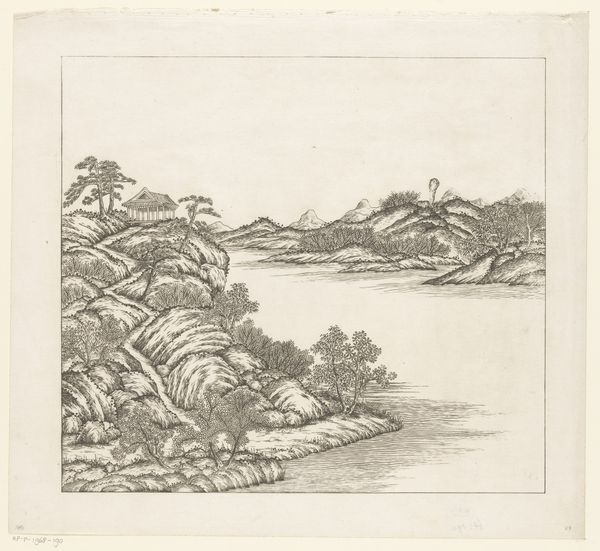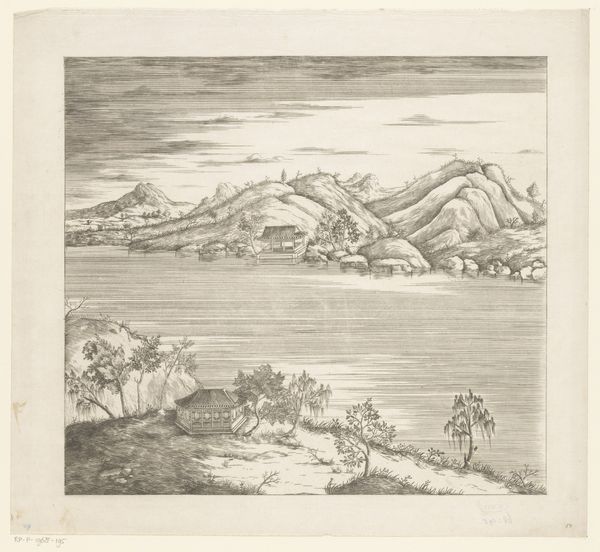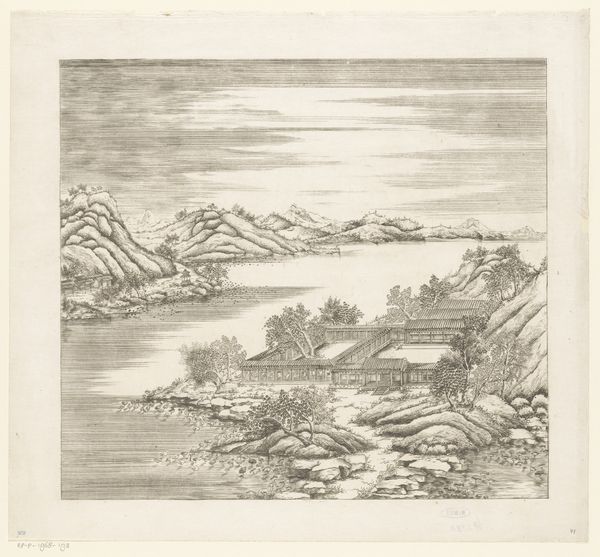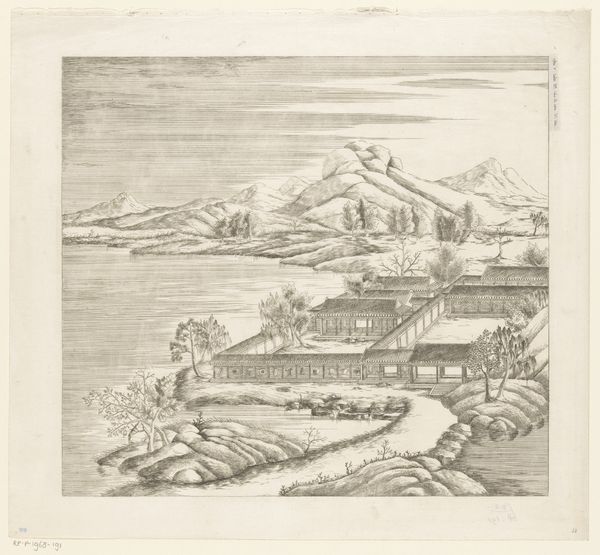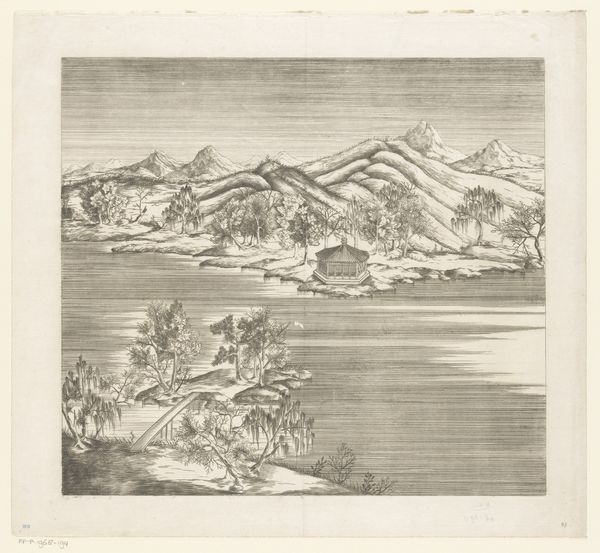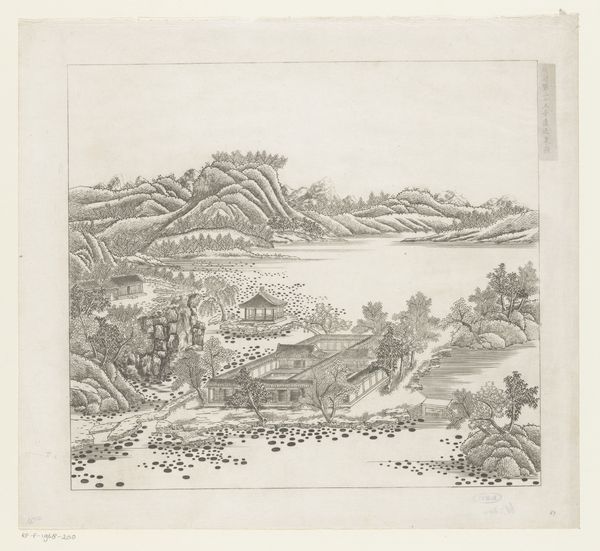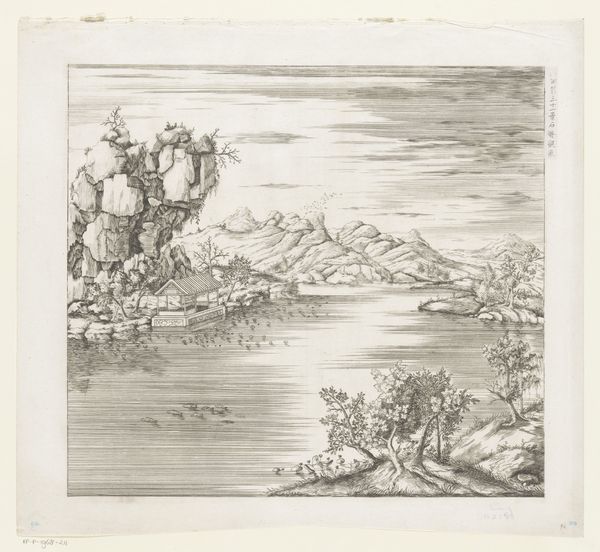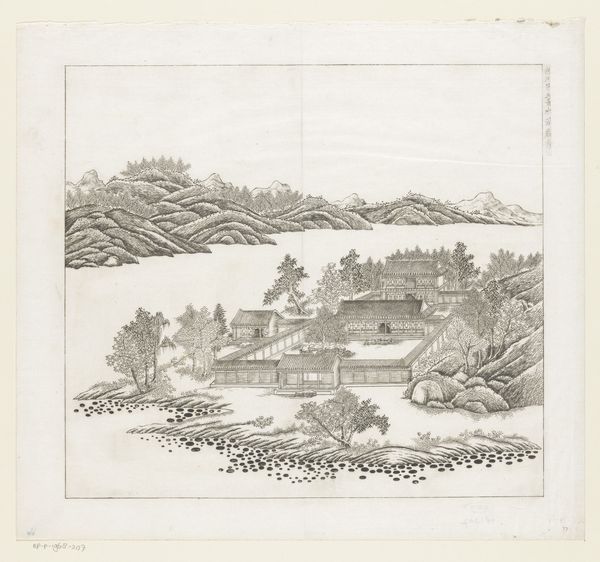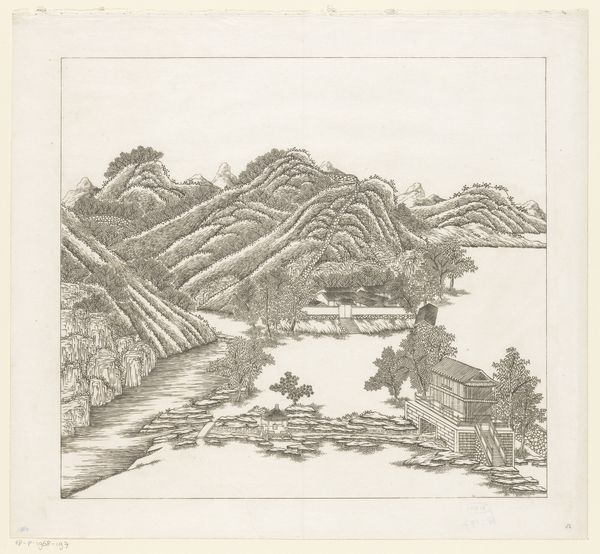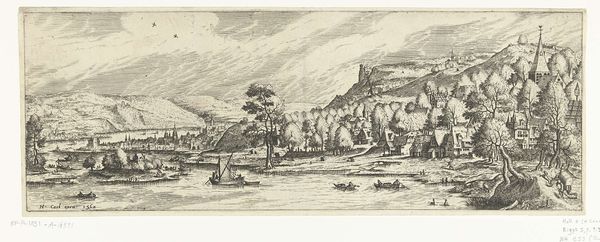
Gezicht op een deel van het keizerlijk zomerpaleis in Chengde (Jehol) te China 1712 - 1714
0:00
0:00
matteoripa
Rijksmuseum
drawing, print, paper, ink
#
drawing
# print
#
pencil sketch
#
asian-art
#
landscape
#
paper
#
ink
Dimensions: height 325 mm, width 356 mm
Copyright: Rijks Museum: Open Domain
Editor: This is a print from 1712 to 1714, entitled 'Gezicht op een deel van het keizerlijk zomerpaleis in Chengde (Jehol) te China', or 'View of part of the Imperial Summer Palace in Chengde (Jehol) in China', made by Matteo Ripa using ink on paper. I’m struck by how serene the scene is, with the water and rolling hills. What pulls you in when you look at this piece? Curator: Well, right away, I imagine the air – the stillness, the way light must have played on the water's surface. I see the almost improbable meeting of European printmaking and Chinese landscape sensibilities. Look how Ripa, an Italian missionary, uses delicate lines to render the palace buildings, but then employs a slightly different touch for those distinctive, almost cartoonish mountains. Doesn’t it make you wonder what he was thinking, straddling those two worlds? Editor: Definitely! It's like he's translating one culture for another, but in his own artistic language. The perspective is so interesting too. Did he have much exposure to the original landscape? Curator: Precisely! And that "language," as you say, is uniquely his. Consider he was engraving these scenes back in Europe. These aren’t on-the-spot sketches, so how much is memory, how much is hearsay, and how much is artistic license? It makes you ponder the nature of representation itself, doesn’t it? Was he creating a factual record or something far more… subjective? Editor: It's fascinating to think about what he chose to emphasize. It's a blend of observation and interpretation, and, like you said, subjective artistic impressions of the place and time. Thanks, that really opens up the image for me. Curator: My pleasure! Now I see even more possibilities. That's the beauty of art, isn’t it? It's a dialogue across time and cultures, inviting us to participate in the ongoing conversation.
Comments
No comments
Be the first to comment and join the conversation on the ultimate creative platform.
